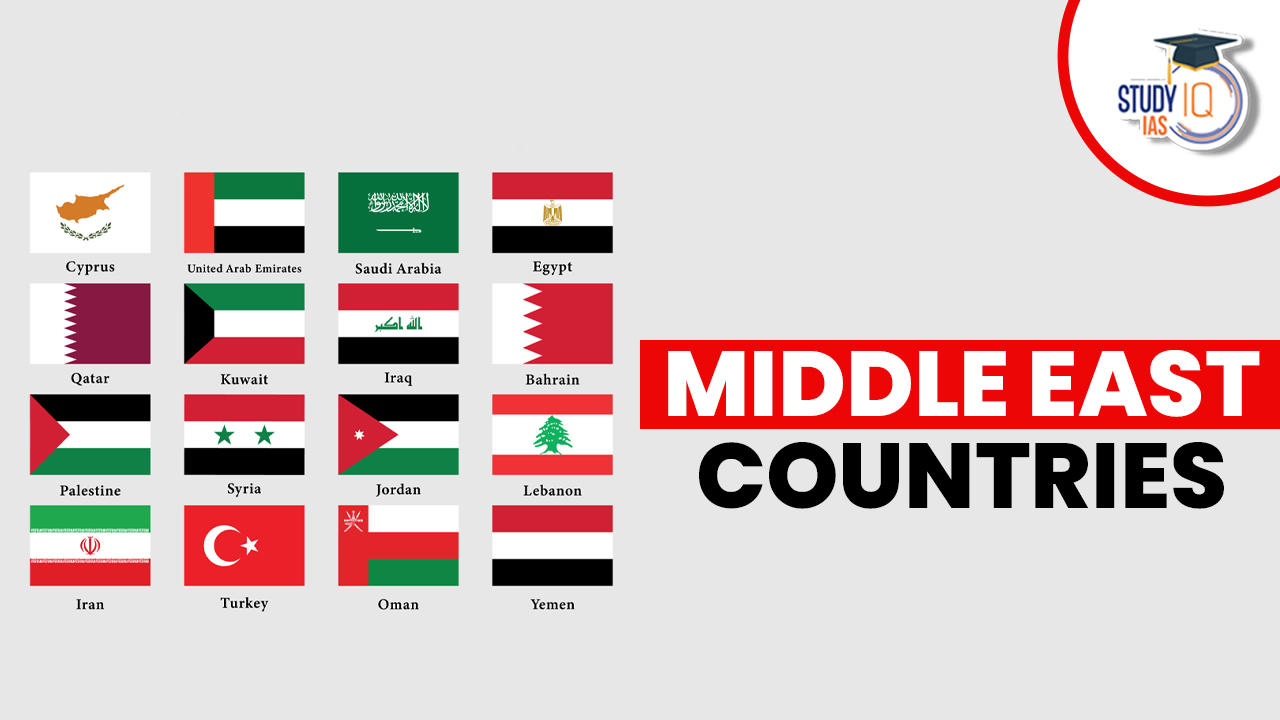Table of Contents
Middle East Countries
The Middle East is a region in Western Asia and North Africa known for its rich history, diverse cultures, and significant global influence. Stretching from the eastern Mediterranean to the Arabian Peninsula, this area has played a crucial role in world affairs for centuries. In this article, we will learn about various countries in the Middle East.
Middle East Countries List with Capitals
The Middle East is a region with around 25 countries, including nations like Iran, Iraq, and Israel. Each country has its own capital city, such as Tehran in Iran, Baghdad in Iraq, and Jerusalem in Israel, serving as important centers for governance and culture in the region.
| S. No | Country | Capital |
| 1 | United Arab Emirates | Abu Dhabi |
| 2 | Algeria | Algiers |
| 3 | Jordan | Amman |
| 4 | Turkey | Ankara |
| 5 | Greece | Athens |
| 6 | Iraq | Baghdad |
| 7 | Azerbaijan | Baku |
| 8 | Lebanon | Beirut |
| 9 | Egypt | Cairo |
| 10 | Syria | Damascus |
| 11 | Qatar | Doha |
| 12 | Pakistan | Islamabad |
| 13 | Afghanistan | Kabul |
| 14 | Sudan | Khartoum |
| 15 | Kuwait | Kuwait City |
| 16 | Bahrain | Manama |
| 17 | Oman | Muscat |
| 18 | Cyprus | Nicosia |
| 19 | Saudi Arabia | Riyadh |
| 20 | Morocco | Rabat |
| 21 | Yemen | Sanaa |
| 22 | Georgia | Tbilisi |
| 23 | Iran | Tehran |
| 24 | Libya | Tripoli |
| 25 | Tunisia | Tunis |
| 26 | Armenia | Yerevan |
Middle East Countries Map

India Middle East Europe Economic Corridor Significance
The India-Middle East-Europe Economic Corridor (IMEE EC) holds great significance as it aims to create a seamless transportation network connecting India, the Middle East, and Europe. This ambitious project involves the development of railways, digital connectivity, energy infrastructure, and clean hydrogen pipelines along the train tracks. Such an integrated transport network will offer a reliable and cost-effective means of shipping goods and services across borders.
One of the key benefits of the IMEE EC is its potential to enhance global supply chains and food security, particularly among emerging nations. The corridor will consist of two main routes: the North Corridor connecting Europe to the Arabian Gulf and the East Corridor linking India to the Arabian Gulf. These routes, supported by a railway network, will complement existing maritime and road links, making trade more efficient and accessible.
Moreover, the inclusion of power cables and clean hydrogen pipes aligns with the growing importance of sustainable energy and environmental considerations. This initiative not only promotes increased trade, especially in energy products, but also signifies a commitment to reducing greenhouse gas emissions and promoting clean energy solutions.
From India’s perspective, the IMEE EC offers significant geographical advantages. It strategically positions India along a commercial route that spans from South East Asia to the Gulf, West Asia, and Europe. This location provides India with economic and strategic benefits, opening up opportunities for its logistics and transportation sector. It offers a more efficient and cost-effective transit option, supporting India’s trade and export activities.
Furthermore, the corridor aligns with India’s goals for a “green transition” by emphasizing sustainability. This is crucial for India’s efforts to reduce its environmental footprint and contribute to global infrastructure development in a responsible manner. Overall, the IMEE EC aims to safeguard supply chains, create jobs, improve trade accessibility, and enhance regional cooperation, making it a significant initiative in fostering economic cohesion between Asia, Europe, and the Middle East.





















 WhatsApp
WhatsApp